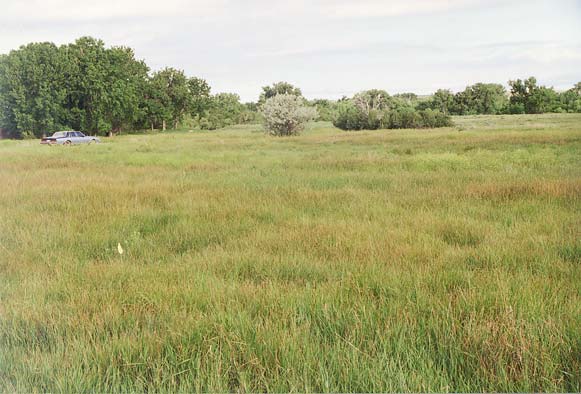Plant
Data Sheet:

Range
Climate, elevation
Local occurrence (where, how common)
This
sedge species is a common dominant in disturbed riparian areas, less commonly
forming dense communities in healthy areas.
It is can be especially dominant in grazed areas because it resists
grazing and trampling damage (3).
Habitat preferences
Plant strategy type/successional
stage
Associated species
Due
to its wide range, species associated with
May be collected as: (seed,
layered, divisions, etc.)
Collection restrictions or
guidelines
Collect
the seed from August through October.
Seed set may be variable, so verify how much collection is necessary
before beginning to harvest (1,2). Seed may be collected by hand or by clipping
off the seed heads. A power harvester can also be used for large-scale harvests
of dense communities. Seed should be
cleaned using a seed cleaner with a No.8 top screen and a No.20 bottom
screen. The screens should be sized so
the seed will fall through. Perigynia
should be removed using a seed scarifier or sandpaper box, then
separated from the seed using screens (2).
Seed germination
Germination
rate is improved by removing the perigynia and pre-chilling the seeds in wet
sphagnum moss at 2°C for 30 days. When germinating seed in a greenhouse, place
seeds on the soil surface and lightly press to ensure good contact with the
soil. The seed should not be covered and
soil should be kept muddy. The greenhouse
should be kept hot (32-38°C). Ideally, germination should begin in roughly
a week (2).
Seed life and storage
No
seed life or storage information was available.
Propagation recommendations
Soil or medium requirements
Installation form (form, potential
for successful outcomes, cost)
Planting
plugs is the most effective way to establish a stand of
Recommended planting density
If
planted 30-45 cm apart, plugs will fill in the area within one growing season (2).
Care requirements after installed
(water weekly, water once etc.)
During
propagation and after installation the soil should be kept saturated, with the
water rarely dropping below the root zone.
No more than 2.5-5.1 cm of standing water should be present, however.
The species can tolerate both periods of drought and complete inundation once
established (2).
Normal rate of growth or spread;
lifespan
Sources cited
(1) Hurd,E.G. et al (1994). Cyperaceae and
juncaceae--selected low-elevation species. Gen-tech-rep-INT.
(2) Interagency Riparian/Wetland Project. Wetland Plant Fact Sheet:
(3) Kovalchik, B.L. (1987). Riparian zone
associations:
(4) Ratliff, R.D.
(1983).
(5) United States Department of Agriculture.
Data compiled by (student name and
date)
Sarah Baker